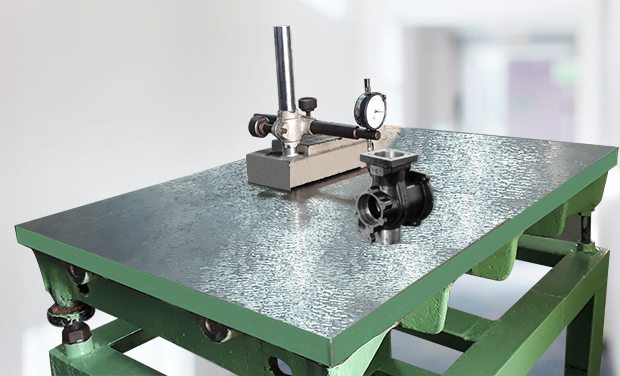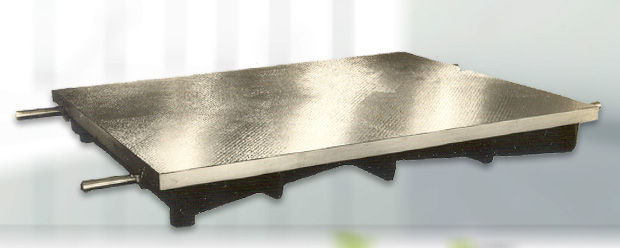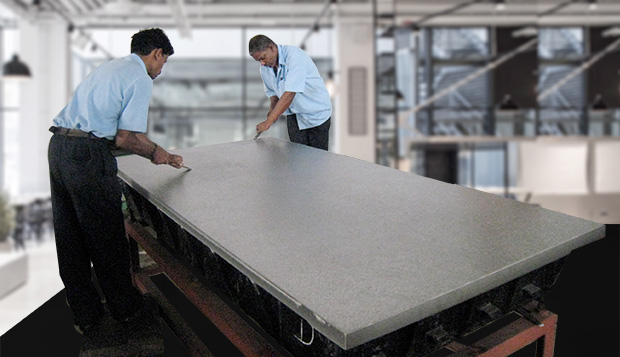 |
| CNC LATHE |
So
What’s a Surface Plate?
To my many friends here, (In fact someone
asked me) who do not know what the technical terms mean… Lathes…Surface
plates??
A lathe is a machine which “turns”
cyclindrical components very accurately. This means that the cylindrical part
is rotated and a cutting tool removes material along its length.
This process has been in use for,
literally, thousands of years. It was used to produce wooden parts and the
process has been refined from holding large logs between to two trees. A modern lathe, though, is a sleek, computer
controlled machine, which can produce many thousands of parts in a day. More on lathes in another article..
What
is a Surface Plate:
These are simply reference datums for
measuring objects. The surface is flat to within a few thousandths of a
millimeter along its entire surface. Any object that is made in engineering, is
made to a very precise size specification. Before sending a product out, a
manufacturer needs to know that the size is within specification. More than
anything else, he needs a perfect plane on which to place the component, from
which to commence measurement of the product and this plane is provided by the
surface plate. Of course the measurements themselves are carried out using
other instruments and tools, but no matter how sophisticated the measuring
instrument, we need a near perfect datum surface.
 |
| CAST IRON SURFACE PLATE
To begin with, GMT made cast iron surface
plates.
Its
made by actually scraping the metal of the surface with a tool
There are are many stages in this process and of course a perfect datum is required. The number of points at which the metal is scraped, the amount shaved off per unit area etc, all contribute to the perfection of the surface. And there is a wide range of tools to achieve this.The idea is to create a surface which is flat, but still has little pockets of air in it, else the object being measured will stick to the surface and resist movement for measurement.
Scraping is a human skill, which, till today cannot be completely mechanized. Over the years, GMT’s team has acquired mastery and trained some of our customers too, for other applications. It’s a hard, physical skill, which involves swinging the body repeatedly, using special tools, to achieve the desired result.
WHY CAN’T IT BE DONE BY MACHINES? Its one of the few processes which have never been entirely achieved by machines. So we can make a surface flat to within 5 thousandths of a millimeter in machine , but not lower than that. It feels quite odd that a human can actually achieve better accuracies than a machine, but the craftsmanship involved in hand scraping involves using human senses (see, touch and feel) to accommodate for inherent differences in the surface of the metal casting.
STANDARDS At the time, there were no Standards for measuring whether the plate itself was within specification. So PV decided to work with the Indian Standards Institute and evolved the standards for it, but that happened later. The Standard defines the flatness which means the variation in micrometers of the surface and the required the number of pockets per unit area required to finish plates for different applications. Check out our webpage for more details on flatness of our cast iron surface plates. https://www.gmt.co.in/metrology-cast-iron-surface-plate.html
WHO SAID THERE IS NO ART IN ENGINEERING?
In those days, we had a lot a lot of time, we were just developing a product, and nobody produced anything in the huge quantities which is common today. Once we completed the surface plate to specification, which means it was functionally perfect, we actually made it look beautiful with a special tool:
Here’s a picture of the surface after it was “dressed”
Much, much later we started making surface plates with black granite, but that again is another story!
|




